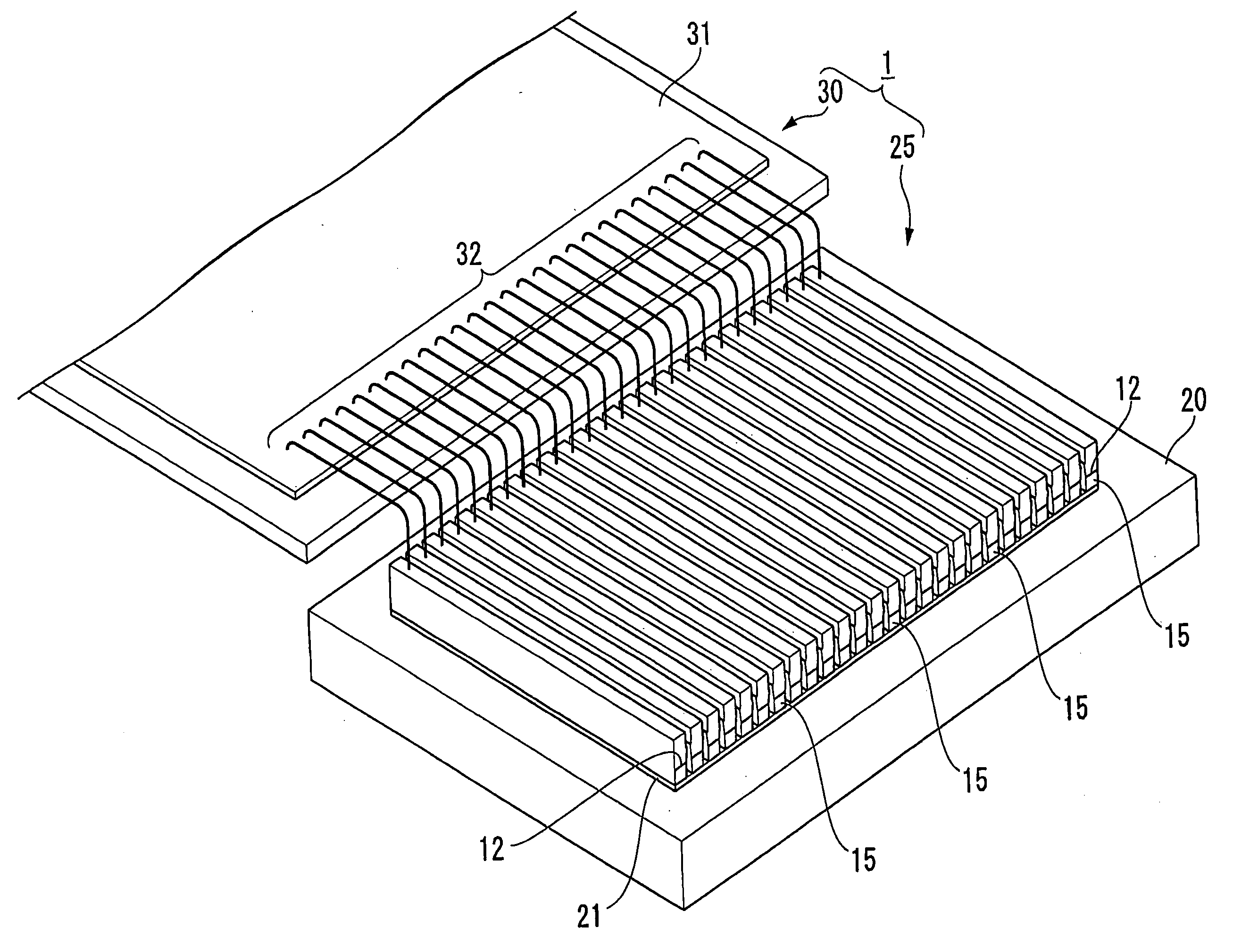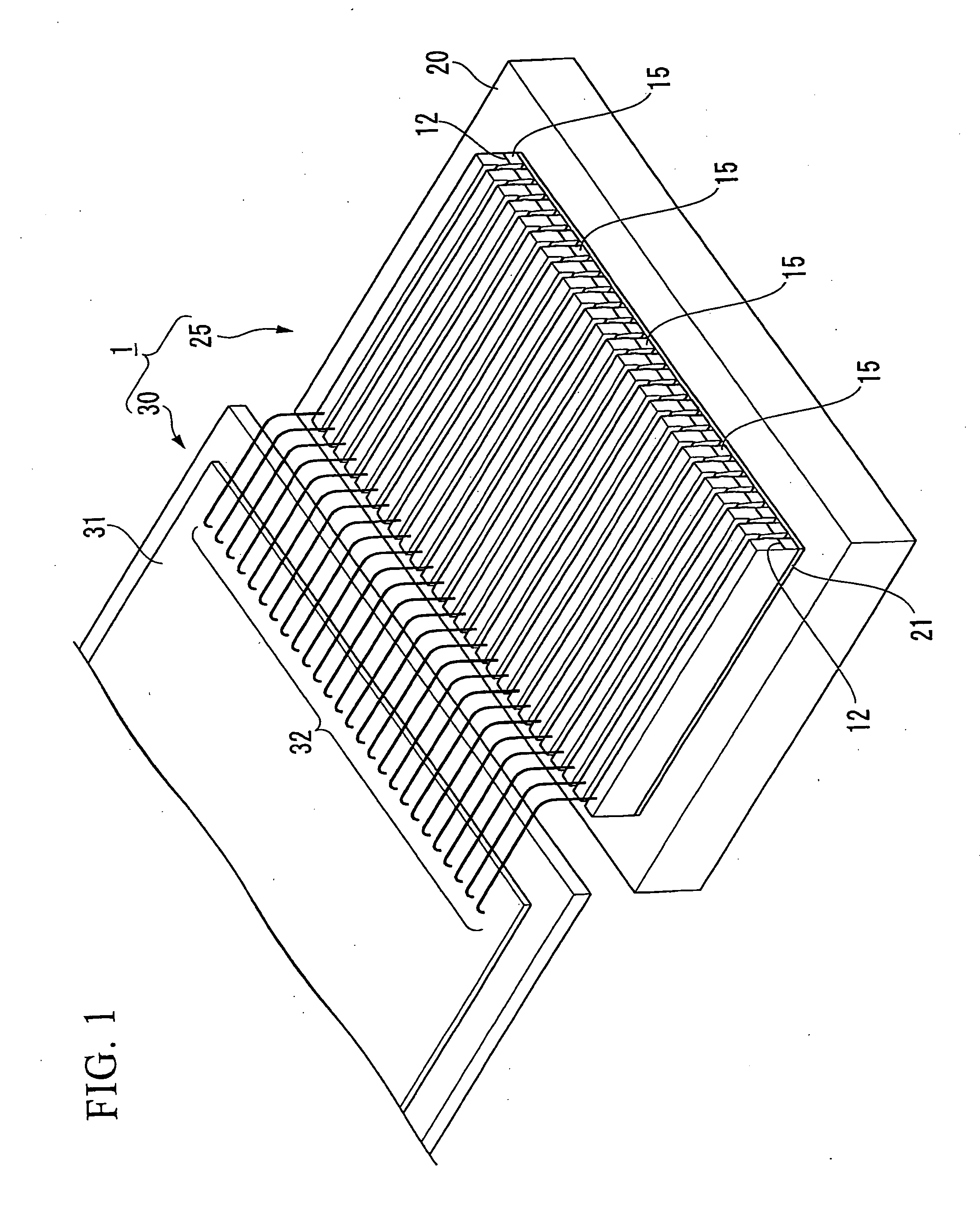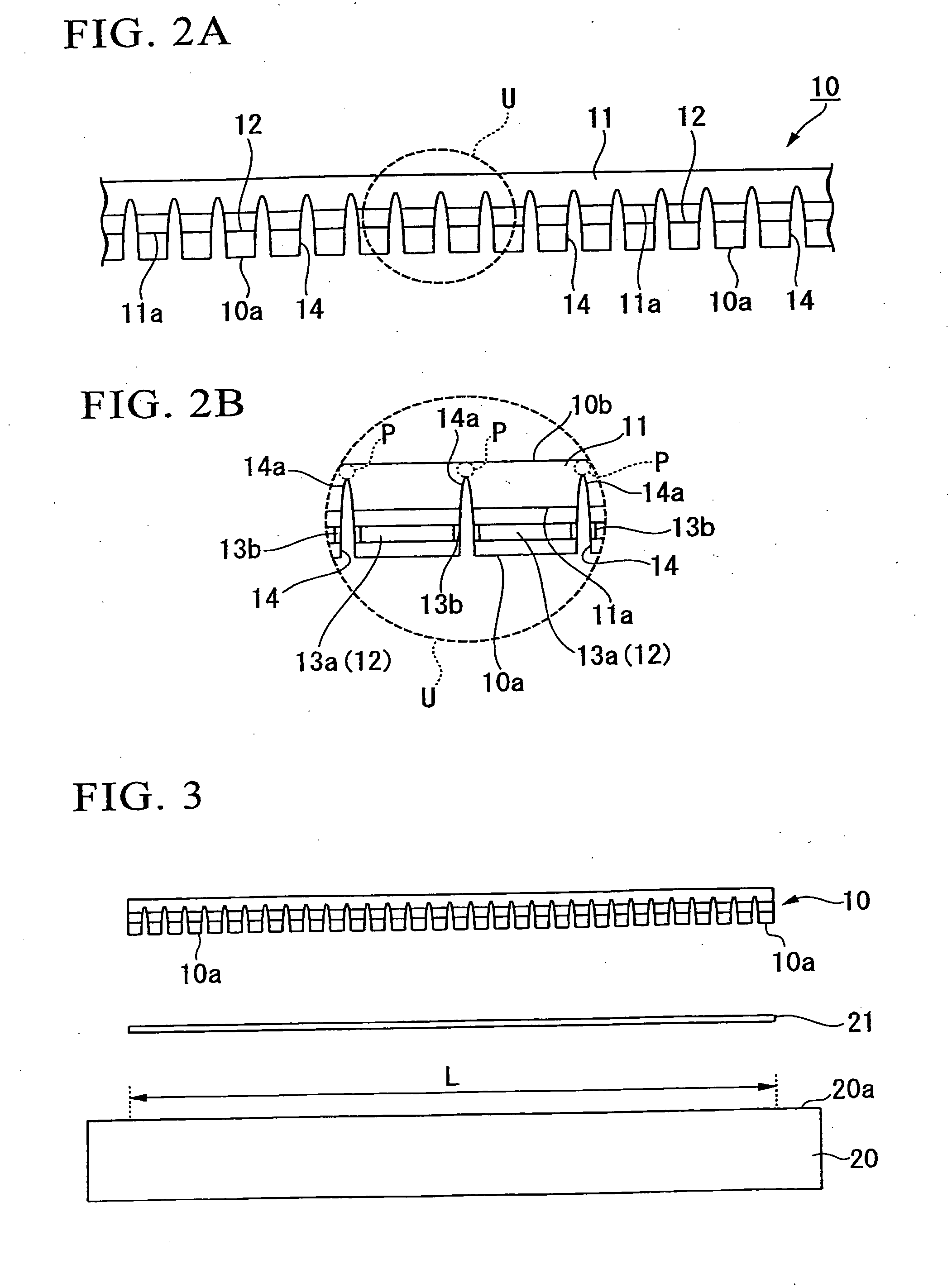Laser array chip, laser module, manufacturing method for manufacturing laser module, manufacturing method for manufacturing laser light source, laser light source, illumination device, monitor, and projector
- Summary
- Abstract
- Description
- Claims
- Application Information
AI Technical Summary
Benefits of technology
Problems solved by technology
Method used
Image
Examples
first embodiment
[0131]A manufacturing method for manufacturing a laser module of this embodiment is explained.
[0132]First, the configuration of the laser module manufactured using the manufacturing method for manufacturing a laser module of this embodiment is explained referring to FIG. 1
[0133]As shown in FIG. 1, the laser module 1 includes a laser light source 25 and a current-supplying substrate 30.
[0134]The laser light source 25 includes a plurality of laser elements 15, a submount 20 (supporting substrate), and a current-supplying substrate 30.
[0135]The submount 20 supports the plurality of laser elements 15, and provides reinforcement to enhance mechanical strength.
[0136]As explained below, the plurality of laser elements 15 are obtained by dividing the laser array chip 10 packaged on the submount 20 into a plurality of laser elements 15.
[0137]First, the laser array chip 10 packaged on the submount 20 is explained referring to FIGS. 2A and 2B.
[0138]FIGS. 2A and 2B show a laser array chip of th...
second embodiment
[0207]Next, a second embodiment of the invention is explained, referring to FIG. 10.
[0208]For purposes of simplification, in FIG. 10, a housing of the projector 100 is not shown.
[0209]In the projector 100, a red laser light source device 101R (light source device), a green laser light source device 101G (light source device), and a blue light source device 101B (light source device), which emit red light, green light, and blue light, respectively, are light source devices 101 having laser modules 1 of the above first embodiment.
[0210]The projector 100 includes an image formation device, having liquid crystal light valves 104R, 104G, and 104B (light modulation devices), which modulate the laser light emitted from the laser light source devices 101R, 101G, and 101B, respectively, and a projection lens 107 (projection device), which enlarges and projects images formed by the liquid crystal light valves 104R, 104G, and 104B onto a screen (display screen) 110.
[0211]Furthermore, the proje...
third embodiment
[0228]First, the configuration of the laser light source of a third embodiment to which the invention is applied is explained.
[0229]FIG. 11 shows a plane configuration of the laser light source seen from above (Z direction).
[0230]FIG. 12 shows a side configuration of the laser light source seen from a side (X direction).
[0231]FIGS. 13A and 13B show the laser light source. FIG. 13A shows a side configuration of the laser light source seen from a side (Y direction), and FIG. 13B is an enlarged cross-sectional view showing the area indicated by reference numeral R in FIG. 13A.
[0232]As shown in FIGS. 11 to 13B, the laser light source 60 includes a laser array chip 75 having five laser elements 65, and a submount 80. Also, as shown in FIG. 13A, division sections 61 are formed between the laser elements 65.
[0233]The laser elements 65 have a semiconductor substrate 66, a semiconductor multilayer film 70 serving as a emission section and formed on the semiconductor substra...
PUM
 Login to View More
Login to View More Abstract
Description
Claims
Application Information
 Login to View More
Login to View More - R&D
- Intellectual Property
- Life Sciences
- Materials
- Tech Scout
- Unparalleled Data Quality
- Higher Quality Content
- 60% Fewer Hallucinations
Browse by: Latest US Patents, China's latest patents, Technical Efficacy Thesaurus, Application Domain, Technology Topic, Popular Technical Reports.
© 2025 PatSnap. All rights reserved.Legal|Privacy policy|Modern Slavery Act Transparency Statement|Sitemap|About US| Contact US: help@patsnap.com



